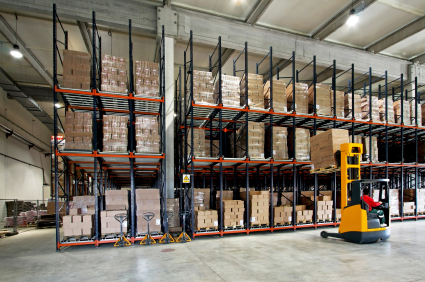 This article was originally featured on the K3S blog and is published here with permission.
This article was originally featured on the K3S blog and is published here with permission.
There’s a saying in purchasing that when the inventory in the warehouse is lean, sales is doing a great job. When the warehouse is overstocked, there must be a problem with purchasing. That’s the world we live in.
Running a profitable company in this economy is as much about keeping inventory lean as it is about boosting sales.
But as everyone knows, that’s easier said than done. With demand fluctuations, supplier issues and tightening wallets, keeping the right balance of inventory is tricky to say the least.
Unfortunately, there is no magic bullet that will keep your inventory perfect all the time. However, the first step in fixing any problem is identifying its causes. In this article, we will talk about 5 of the most common mistakes buyers make when placing orders. Once identified, we can put a few simple practices in place that will help us become more accurate in our orders, increase our fill rates, and reduce our inventory.
Blinded by Averages
Someone once told me that if you have your head in a freezer and your feet in a fire, on average, your body temperature is about right…but you definitely will not be comfortable. Most buyers have some kind of system that tells them the average movement for their products by the day, week or month. Nearly every order is based off of these averages, and they should be. However, there are a couple reasons why this can be dangerous.
First, we all know that products can experience large unexplained drops or spikes in demand for one period. If your calculations do not have a way to filter those periods, they can cause a large swing in the overall average. A large change in your average would lead to a dramatic change in the future order quantity. If this spike or dip in demand does not continue in the future, you will either have way too much stock or worse…not enough.
In addition, unless buyers know just how much those items fluctuate in demand, there is no way they can possibly place accurate orders when it comes to safety stock. One product could be very stable, requiring very little safety stock, while another is very erratic and requires significantly more. If all your buyers have is a straight average, they will never know this. Their head’s in the freezer…feet in the fire.
Lead-Time Forecasting
So you’re all set! You’ve got a good, solid demand forecast. Now you can place your orders with confidence, right? Well, not quite. You still have the minor issue of the suppliers. How dependable are your suppliers when they tell you they have a 14-day lead-time on orders? If you’re like most of our customers, your suppliers are probably not very reliable. Just like your product demand can vary from one period to the next, so too can supplier lead times.
One of our customers on the west coast imports tires from over seas. Their suppliers told them to plan on a 6-month lead-time on all of the tires, and they took the supplier at their word. When they actually started looking at the recorded lead times, however, they found that on one of their lines, the lead time was more like 7 weeks! They had an extra 4 months of safety stock!
Contrast that with another customer where a supplier quoted a 14-day lead-time. When they looked at real POs, the actual lead time averaged 30 days. They could not figure out why they kept running out of stock on their items.
If you take your suppliers for their word, it can have a hugely detrimental impact on your inventory levels and fill-rates.
Seasonality
Now that we have uncovered the danger of averages and have a firm grasp on lead-times, your inventory should start to make a lot more sense. But there are still a few more pieces to look at.
Next, it’s important for you to identify products that show a seasonal tendency. On the surface, seasonality is a simple concept. It makes sense that you would sell more chicken soup in the winter, and Gatorade in the summer. The challenge comes with those products that are not so obvious. Typically, our customers see about 20% of their products with a seasonal profile (although, like product demand, this can vary greatly from one customer to the next). Working around the country, we have found markets where products like Pepto-Bismol, Vienna Sausages, and even condoms had a distinct season. By identifying these items and knowing when they will peak (or experience their off-season), you can account for the increase and decrease in demand when needed.
Order Cycle Analysis
How often you order from a vendor is just as important to you as how much you order. If your minimum order from a vendor is $500, should you order as soon as you can meet the minimum? Maybe, but maybe not.
There is a cost associated with every order. Suppliers may have an order cost or shipping cost. And of course there is some cost associated with receiving a shipment at your dock to unload the truck and put it on your shelves. Ordering too often can end up costing you a significant amount of money in the long run. On the other hand, if you order too infrequently, there are the carrying costs. Depending on the items in your warehouse, your carrying cost on your inventory is probably about 25% of the total inventory. That means it costs you about $250,000 per year for every $1,000,000 of inventory in your warehouse. Ordering too infrequently means carrying more inventory. More inventory means more carrying costs. What’s a buyer to do?
The answer is to find the right balance. There are formulas out there that will give you some guidance on this issue. In general, the best answer is to have a well thought out plan and stick to it.
Time Supply Ordering
In a perfect world, when we sit down to order we would look at our solid, well thought out demand forecasts and based on our order cycles build an order that will meet our minimums every time. The reality is that inventory does not always cooperate. You may build an order and realize that you have not met your minimum order. Then what? Do you just add a little extra on your fastest movers? Or, maybe you have exceeded your maximum order. What do you do? Do you trim your slow movers?
The problem with either of these scenarios is time supply. If you add your fast movers to meet your minimum, what will happen on your next order? You’ll have an excess supply of your fast-moving products and need some of your slower ones…and still won’t meet your minimum. In the second scenario, you will frequently run out of your slower moving products long before you can justify placing another order.
The answer to this dilemma is time supply ordering. When you need to add to an order or trim an order, make sure you do it based on days worth of stock across the entire order. By doing so you will avoid the final major pitfall in inventory replenishment and make your buyers lives a lot easier.
Although inventory replenishment will never be an exact science and demand forecasts will never be perfect, it is important to make sure your buyers have a well thought out plan when they sit down to place their orders. If not, you risk allowing inventory costs to get out of control costing you millions of dollars each year. Getting a handle on product averages, lead times, seasonality, order cycle analysis and time supply ordering will by no means fix every problem you will encounter in inventory replenishment. These five factors will, however, make a huge impact on your order accuracy, inventory levels, your fill rates and consequently your profits.
About the author
 The process of buying and replenishing inventory can be a truly daunting task. Dan and K3S work with companies of all sizes to help them modernize their buying processes through smarter purchasing tools and techniques. The result is clients who operate more efficiently and profitably. Connect with Dan on LinkedIn
The process of buying and replenishing inventory can be a truly daunting task. Dan and K3S work with companies of all sizes to help them modernize their buying processes through smarter purchasing tools and techniques. The result is clients who operate more efficiently and profitably. Connect with Dan on LinkedIn
Topics: Food Manufacturing, Purchasing & Procurement, Food Service












